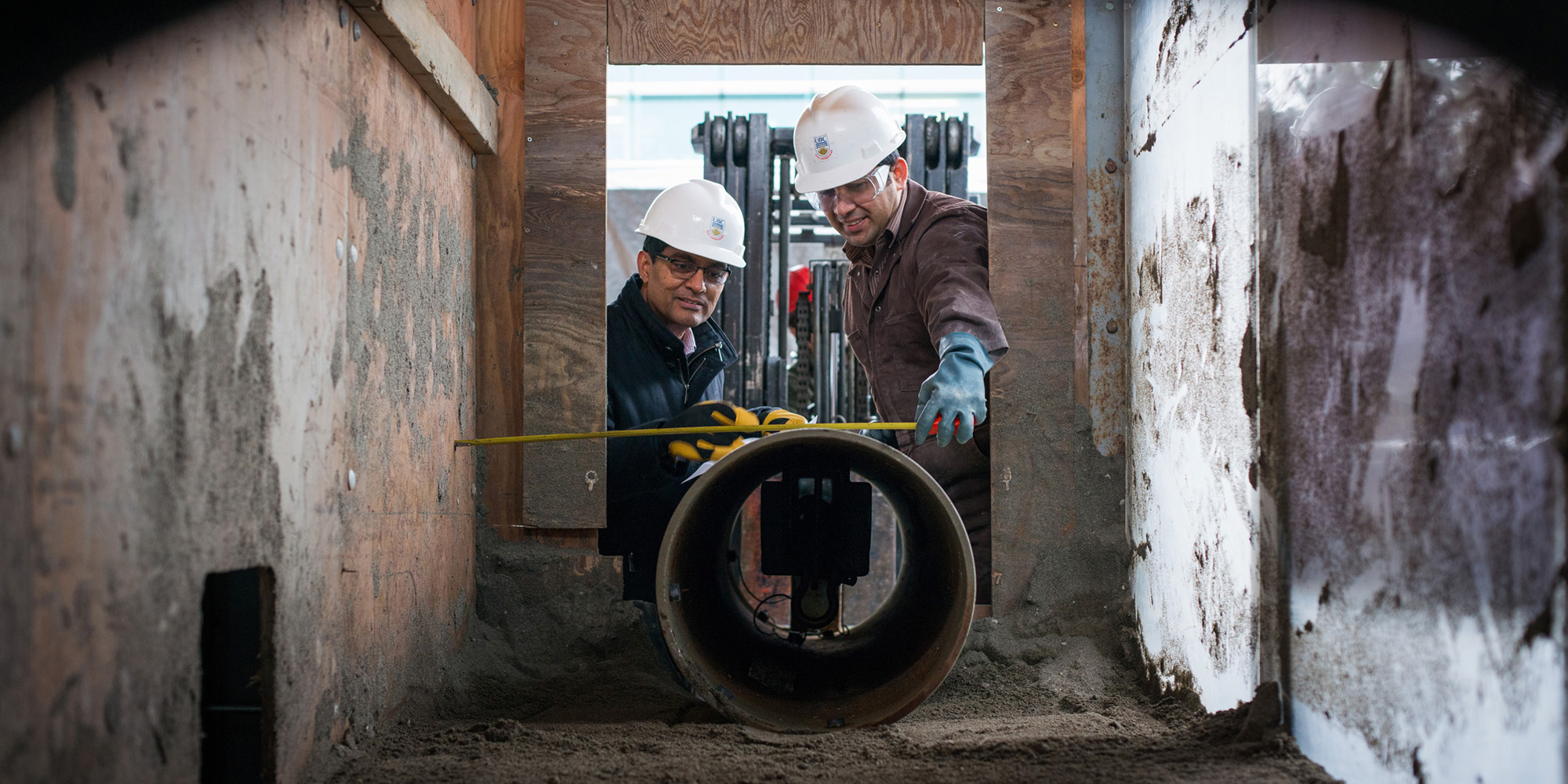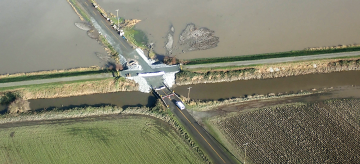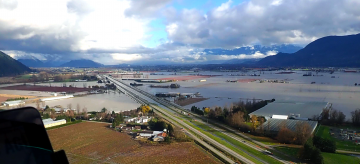Overview
Research activities include advanced laboratory and field testing to characterize soil behaviour, and related constitutive and numerical modelling. These activities are conducted within a large and diverse geotechnical community: The Vancouver Geotechnical Society is one of the most active in Canada. Much of the research is undertaken in collaboration with government and in university-industry partnerships.
Key Areas
- Soil property characterization in the state-of-the-art soil mechanics research laboratory
- Internal erosion of dams
- Liquefaction of silts
- Soil-structure and soil-pipeline interaction
- Theoretical and computational geomechanics
- Constitutive modeling of soils
- Physics and mechanics of granular materials
- Soil dynamics and geotechnical earthquake engineering
Media Highlights
- Prof. Wijewickreme honoured by Engineering Institute of Canada
- UBC Civil In The Media – B.C. Flooding and Landslides
- BC Natural Disaster Technical Briefing – Webcast Recording
- UBC Civil In The Media – Better forecasting could prevent disasters
Specialization Requirements
| MEng | MASc | PhD | |
|---|---|---|---|
| Elective courses (min. credits) | 29 | 17 | 29 |
| Seminar course (CIVL 597 – 107/207) | 1 | 1 | 1 |
| Thesis course | N/A | 12 (CIVL 599) | CIVL 699 |
Special Note: It is expected that 50% of the required credits be from graduate level CIVL courses (i.e. 15 credits from CIVL 5XX courses).
Elective requirements
Electives may be taken from the list of Approved Electives below, or other electives may be taken with the approval of the Specialty Advisor / Supervisor.
Undergraduate students who are interested in Geotechnical Engineering are directed to the following courses:
- CIVL 410
- CIVL 411
- CIVL 413
- IGEN 450
- MINE 480
- EOSC 433
Graduate Courses
1N/A – not offered in 2025/26.
2Credit will only be granted for one of EOSC 428 / 532, one of EOSC 434 / 534, and one of EOSC 433 / 536.
3CIVL 558 is a one-week field and classroom course.
| Approved Graduate Electives |
|||
| Course No. | Name | Credits | Term |
| a) Civil Geotechnical Electives | |||
| CIVL 558 | Dam Infrastructure in BC | 2 | 23 |
| CIVL 570 | Advanced Soil Mechanics | 2 | N/A1 |
| CIVL 574 | Experimental Soil Mechanics | 3 | 2 |
| CIVL 575 | Constitutive Models for Soil | 3 | 2 |
| CIVL 579 | Geosynthetics | 2 | N/A1 |
| CIVL 580 | Geotechnical Earthquake Engineering | 3 | 1 |
| CIVL 581 | Soil Dynamics for Design Practice | 3 | N/A1 |
| CIVL 598A | Numerical Modeling in Geotechnical Engineering | 3 | N/A1 |
| CIVL 504 | Seismicity and Seismic Design Parameters | 2 | 2 |
| CIVL 505 | Seismic Response of Structures | 3 | N/A1 |
| CIVL 507 | Dynamics of Structures I | 3 | 1 |
| CIVL 518 | Reliability and Structural Safety | 3 | 1 |
| CIVL 520 | Construction Planning and Control | 3 | 1 |
| CIVL 537 | Computational Mechanics I | 3 | 2 |
| b) External Geotechnical Electives | |||
| EOSC 529 | Advanced Geotechnics | 3 | 2 |
| 2EOSC 532 | Field Laboratory in Groundwater Hydrology | 3 | 2 |
| EOSC 533 | Advanced Groundwater Hydrology | 3 | 1 |
| 2EOSC 534 | Geological Engineering: Soils and Weak Rocks | 3 | 2 |
| EOSC 535 | Transport Processes in Porous Media | 3 | N/A1 |
| 2EOSC 536 | Geotechnical Modelling in Practice | 3 | 1 |
| EOSC 547 | Tunneling and Underground Engineering | 3 | N/A1 |
| MECH 561 | Linear Elasticity | 3 | N/A1 |
| MINE 505 | Advanced Topics in Rock Engineering | 3 | 2 |
| MINE 590L | Mined Material Physical Characterization & Behaviour | 3 | N/A1 |
| Approved Undergraduate Electives | |||
|
Course No. |
Name | Credits | Term |
| CIVL 410 | Foundation Engineering I | 3 | 1 |
| CIVL 411 | Foundation Engineering II | 3 | 2 |
| CIVL 413 | Design of Earth Dams and Containment Structures | 3 | 2 |
| CIVL 417 | Coastal Engineering | 3 | 2 |
| EOSC 330 | Principles of Geomorphology | 3 | 1 |
| EOSC 350 | Env., Geotechnical, and Exploration Geophysics I | 3 | 1 |
| IGEN 450 | Pipeline Engineering | 3 | 1 |
| IGEN 452 | Pipeline Design | 3 | 2 |
| MINE 403 | Rock Mechanics Design | 3 | 2 |
| MINE 480 | Mine Waste Management | 3 | N/A1 |
Questions?
To learn more about Geotechnical Engineering at UBC, please contact Dr. Jonathan Fannin.
People
Facilities
Excellent research facilities exist for advanced laboratory experimentation, field testing, and numerical modeling in soil mechanics and geotechnical engineering, including two graduate research laboratories with innovative test equipment and state-of-the-art control and data acquisition systems. Learn more.









